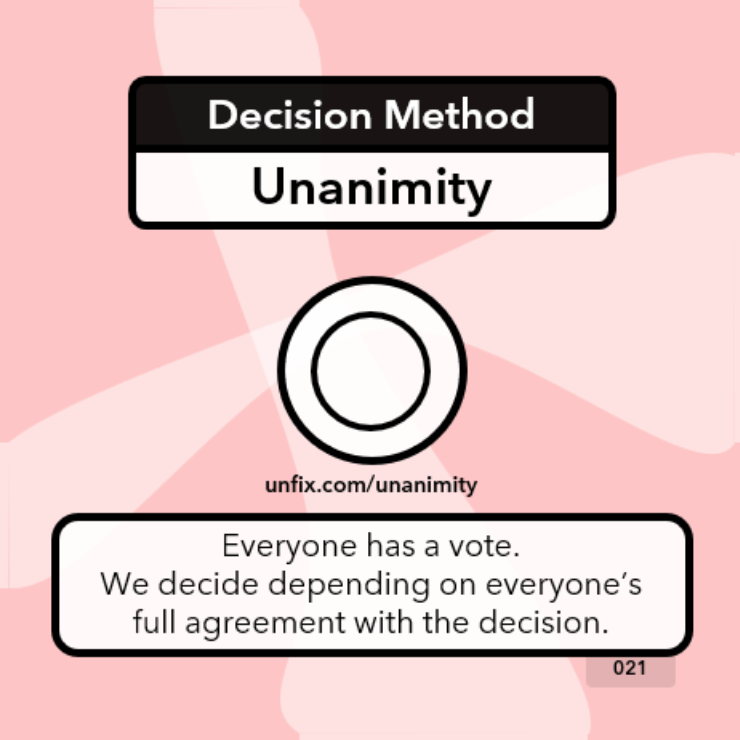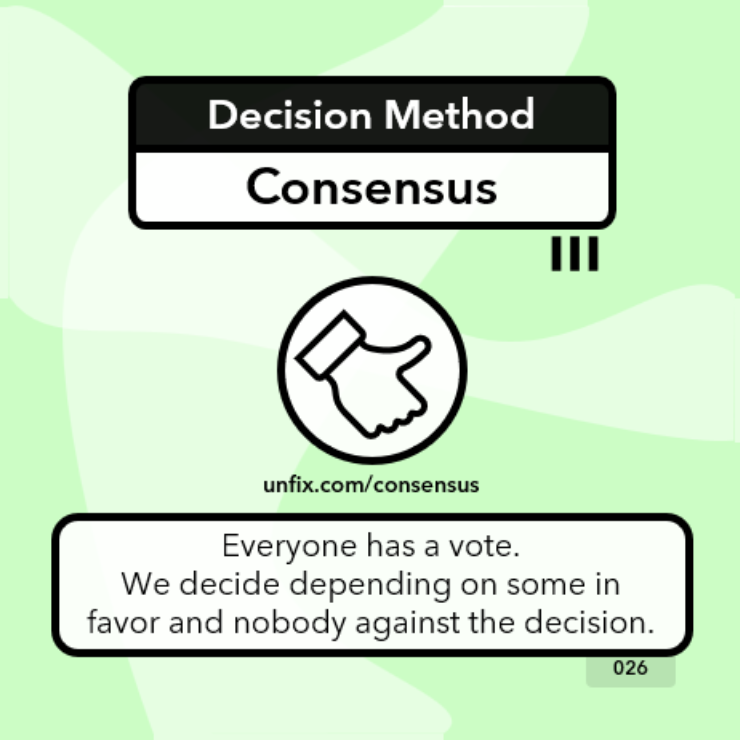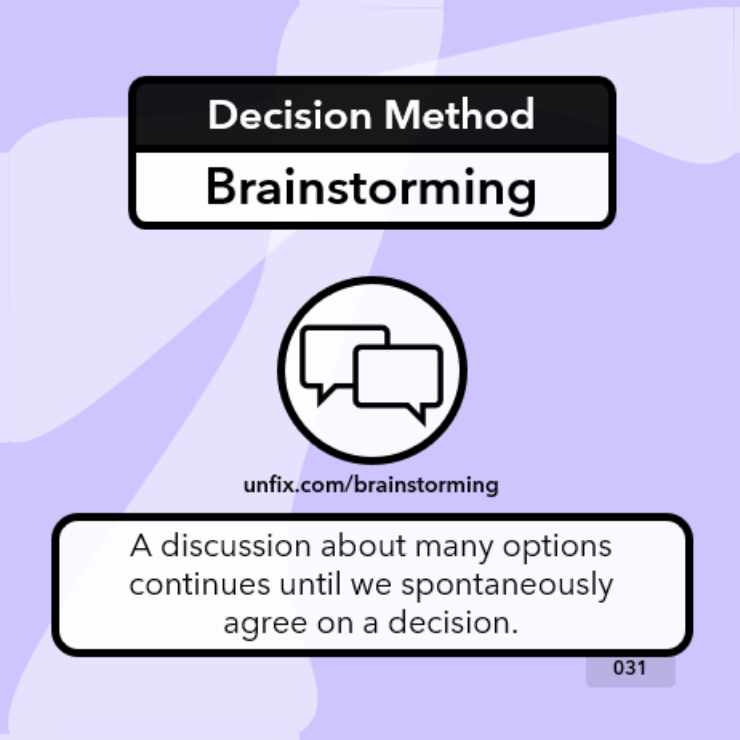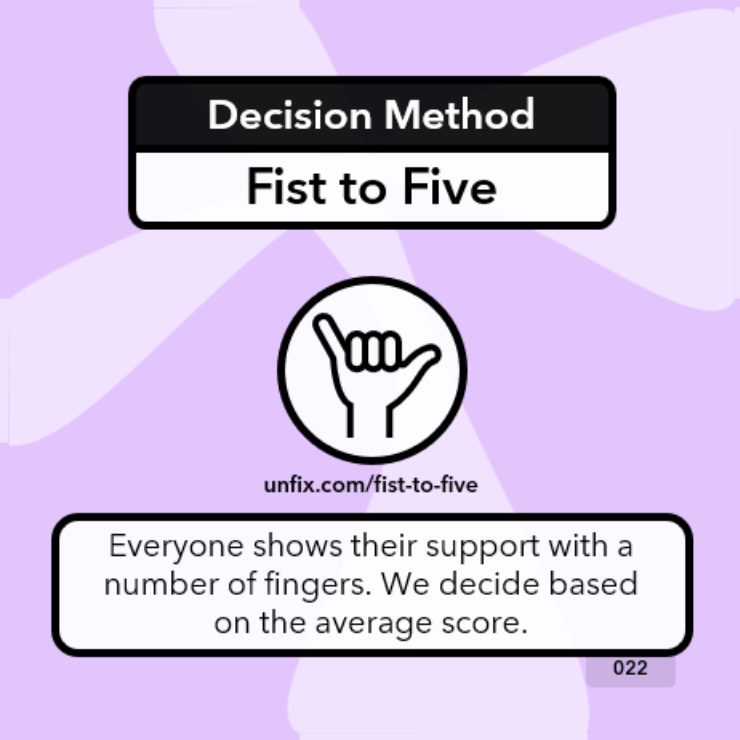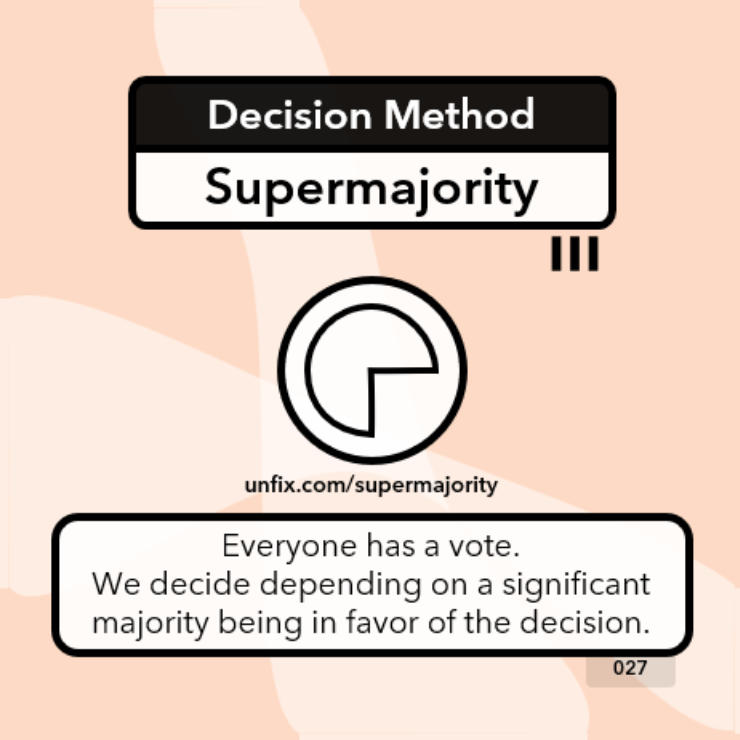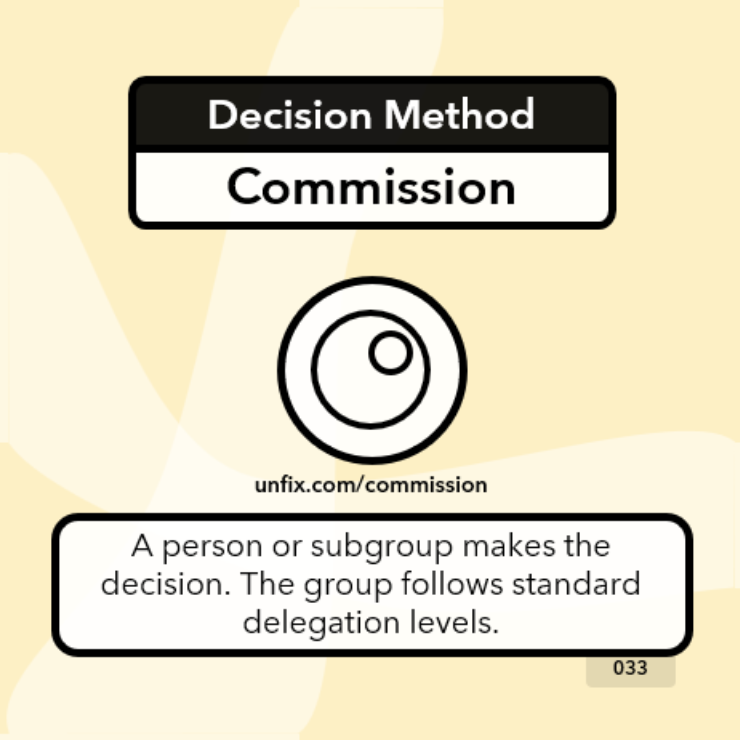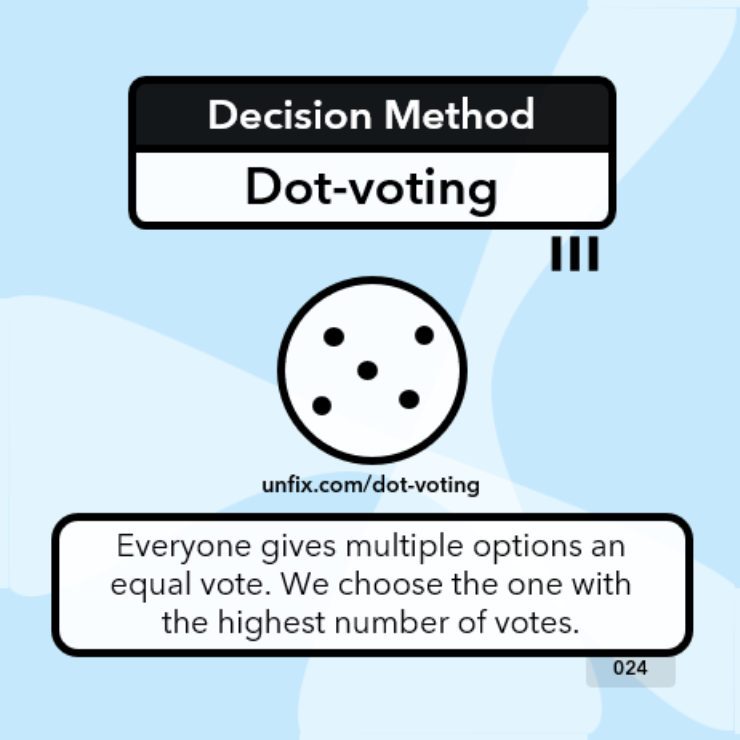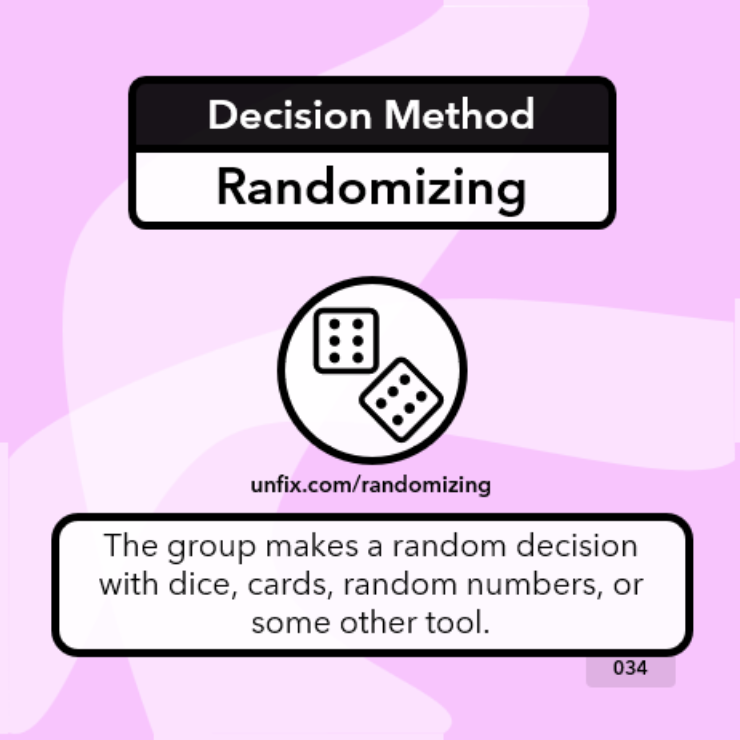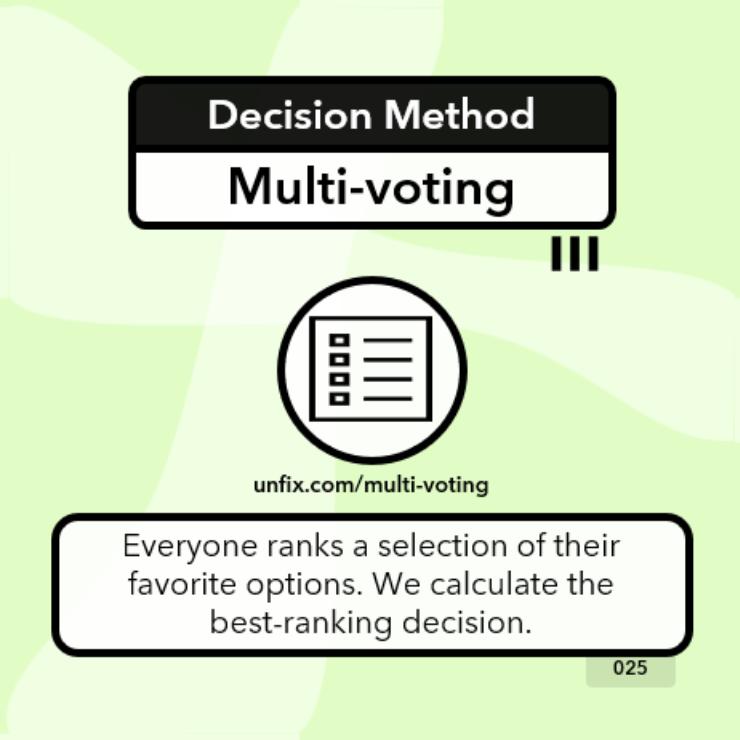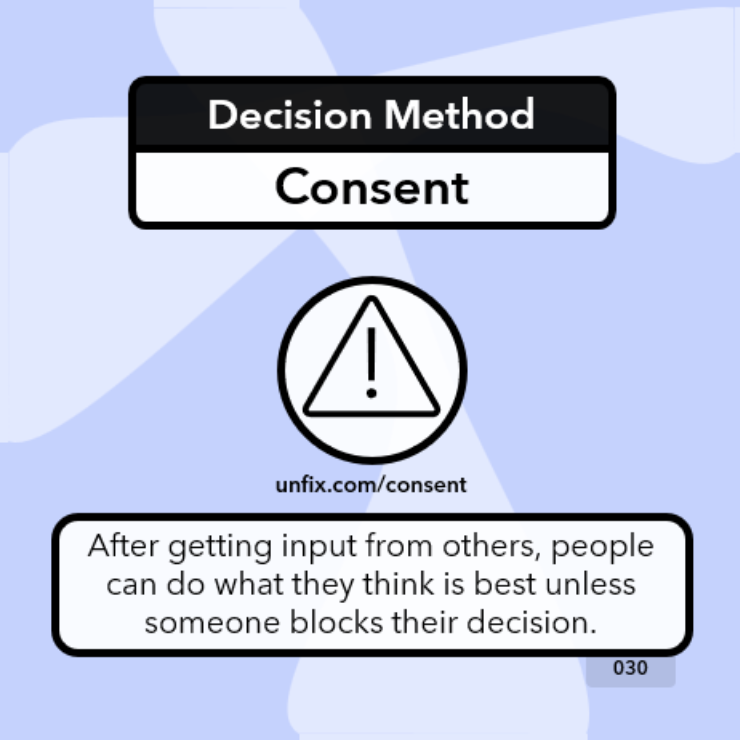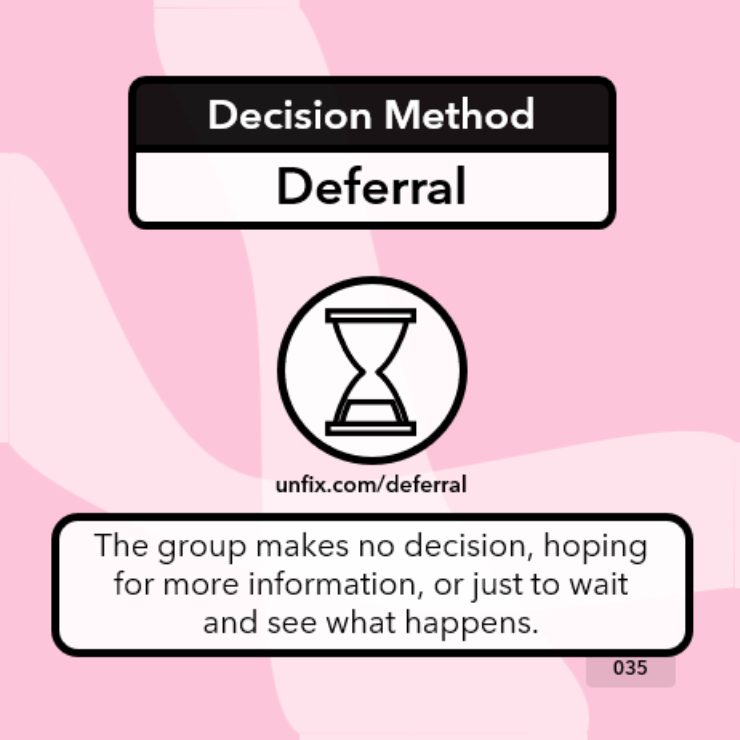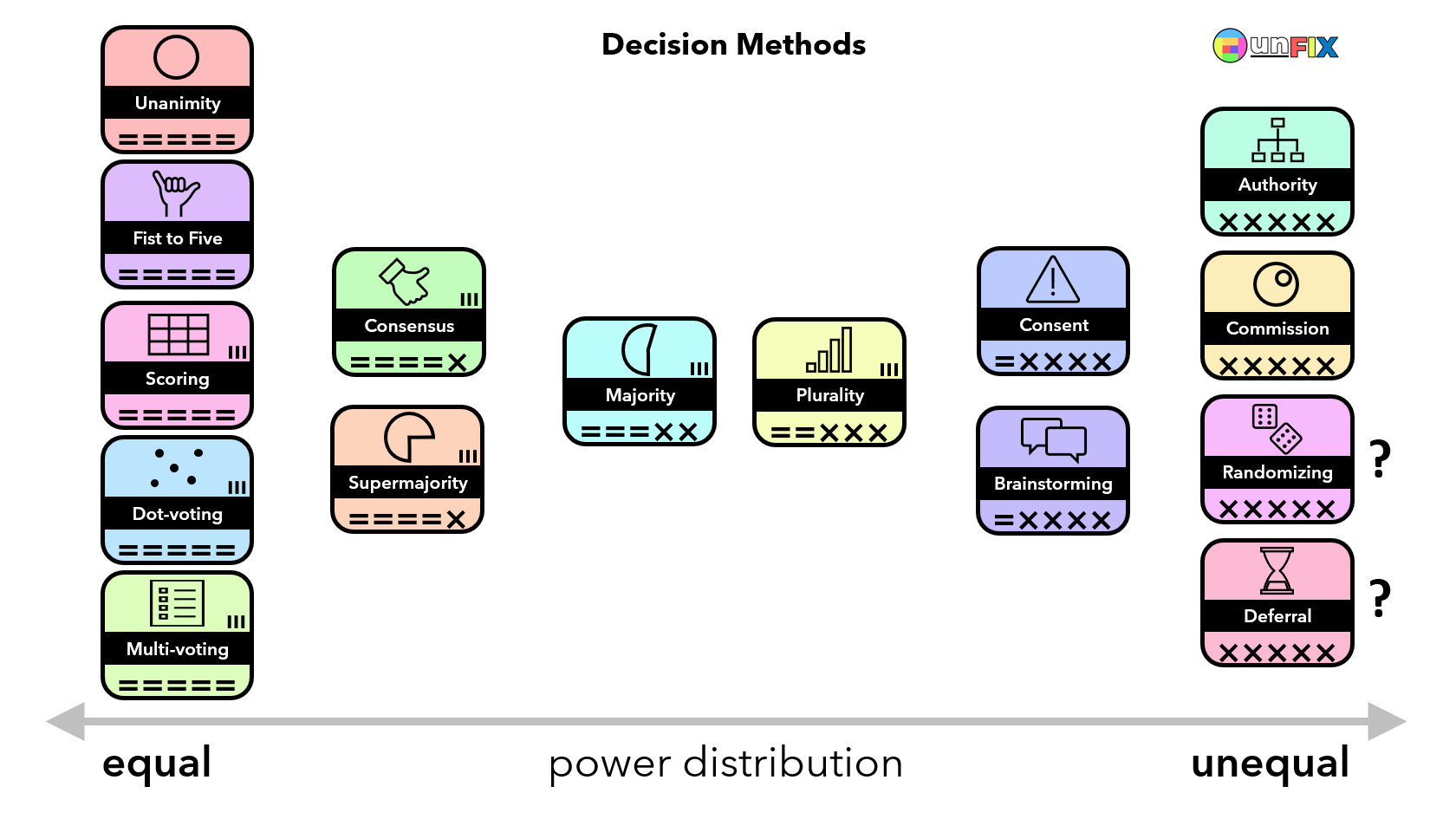
Majority
Decision Method
Majority means everyone has a vote. The decision is done when more than half are in favor of the decision.
Decision Methods: Unanimity • Fist to Five • Scoring • Dot-Voting • Multi-Voting • Consensus • Supermajority • Majority • Plurality • Consent • Brainstorming • Authority • Commission • Randomizing • Deferral
Purpose
Simple majority voting is one of the most common decision-making processes used in democratic systems. In this approach, every participant is granted an equal voice and vote, emphasizing the principle of equal representation. For a decision to be approved, it doesn't need unanimous or overwhelming support; it simply needs more than half of the participants to be in favor. This ensures that the chosen outcome reflects the preference of the majority of those involved. While majority voting can expedite decisions and reflect the collective will of a group, it also underscores the importance of ensuring that the minority's views are still considered and respected, even if they don't dictate the final outcome.
Notes
Majority decision-making can be effective for straightforward choices and time-sensitive matters, but it may not always yield the most inclusive or nuanced outcomes.
Rules / Constraints
We have not yet defined rules or constraints for this decision method.




“Sometimes you make the right decision, sometimes you make the decision right.”
(Source: Phil McGraw)


